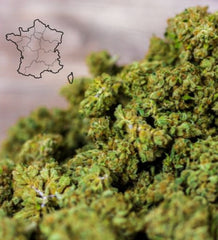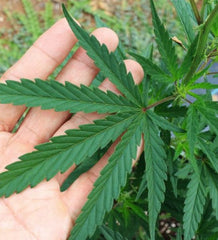
Can CBD help with day-to-day living with ankylosing spondylitis?
Can CBD help with ankylosing spondylitis?
To relieve the pain caused by ankylosing spondylitis, treatments such as physiotherapy, exercises, massages or stretching are effective.
However, for additional pain relief, some patients turn to medications such as traditional pain relievers, corticosteroid injections, or nonsteroidal anti-inflammatory drugs. But the real problem with these products is that they can cause harmful side effects.
As a result, patients are wondering if CBD can help relieve this pain.
Please note that no specific research has been conducted on CBD to determine its effectiveness in relieving ankylosing spondylitis. However, a study is underway to determine whether CBD is effective in ankylosing spondylitis and rheumatoid arthritis. According to the researchers, the primary function of cannabinoids is to reduce inflammation.
They work by interfering with the body's endocannabinoid system. This system regulates many physiological processes in the body, and the inflammatory response is no exception.
In fact, inflammation is a process the immune system uses to respond to injuries and infections. And in certain critical situations, this inflammation can be very beneficial.
But be careful, the immune system can be overactive for no reason and cause inflammation, which can lead to a variety of pains, including ankylosing spondylitis.
And this is where CBD can be of great help. It helps to suppress the immune system to reduce pain and inflammation.
Compared to THC, which directly connects with receptors, CBD enhances the functioning of the body's natural cannabinoid components to induce recovery without unwanted consequences. CBD also affects receptors beyond the ECS, increasing its overall effectiveness.
While CBD does not cure ankylosing spondylitis, it may provide relief from pain.
What does research say about CBD oil for inflammation and pain?
It's true that CBD doesn't cure ankylosing spondylitis, but some research has been done on the effect of CBD oil on inflammation and pain.
According to a study published by the European Journal of Pain in 2016, researchers studied the effects of CBD on rats affected by arthritis.
At the end of this experiment, it was noted that massaging the CBD gel resulted in a decrease in swelling and pain in the rats. This same study showed that CBD helped reduce the functioning of inflammatory chemicals.
Furthermore, another study conducted in 2019 on 97 participants suffering from a painful condition and who had been using opioids for several months, reacted positively after using CBD oil. 53% of participants stopped or reduced their opioid intake and 94% saw an improvement in their quality of life and benefited from better sleep .

How to Use CBD for Ankylosing Spondylitis?
There are several CBD derivatives, and choosing the best one to have a positive effect on ankylosing spondylitis can be complicated. Therefore, the first thing to consider is whether to prioritize oral consumption, use as a topical cream, or inhalation.
But know that each of these options has its advantages and disadvantages.
Oral consumption
CBD derivatives that you can take orally include oils, capsules, and edibles. Oral consumption allows CBD to pass through the digestive system into the bloodstream. Thus, CBD can affect the entire body, allowing for an immediate effect on systemic symptoms. Hence, the main advantage.
The downside is that the digestive system and liver metabolize a large portion of the CBD, leaving only a tiny fraction. Furthermore, according to a WHO report, the body only utilizes 6% of the CBD taken orally. This represents a waste considering the very high cost of high-quality CBD.
Inhaling CBD
The consumer who inhales CBD has a very high bioavailability level. This is a method that takes into account vaping or smoking CBD flower . It gives an almost immediate result.
But the downside of inhaling is that it leads to smoking, which also affects the lungs. This is why experts recommend vaping, since it doesn't emit combustion.
Topical use
Using topical creams or balms can help soothe painful areas. CBD is absorbed through the skin, providing immediate relief to inflamed or painful areas. Creams and balms may also contain other anti-inflammatory ingredients to increase the level of relief.
The downside is that topical creams and balms are only effective on certain areas, so they may not provide relief for people with ankylosing spondylitis.
Full Spectrum or CBD Isolate: Which Oil Should You Choose?
Between full spectrum or isolate , which should you use to relieve ankylosing spondylitis? Full spectrum contains cannabinoids and terpenes, while isolate contains only pure or near-pure CBD.
According to some experts, full-spectrum CBD offers superior results compared to isolate. Cannabinoids like CBG and CBC are anti-inflammatory and pain-relieving, allowing consumers to benefit from their therapeutic properties.
In summary, while there is no concrete research on the effect of CBD on ankylosing spondylitis, there is still evidence that supports the positive effects of CBD against inflammation and pain. This represents a truly natural alternative to painkillers. But be careful, while it is true that CBD has no side effects or harmful effects, we recommend that anyone trying it for the first time seek medical advice.
The latter will ensure that CBD is the appropriate treatment to resolve his inflammatory problems.






